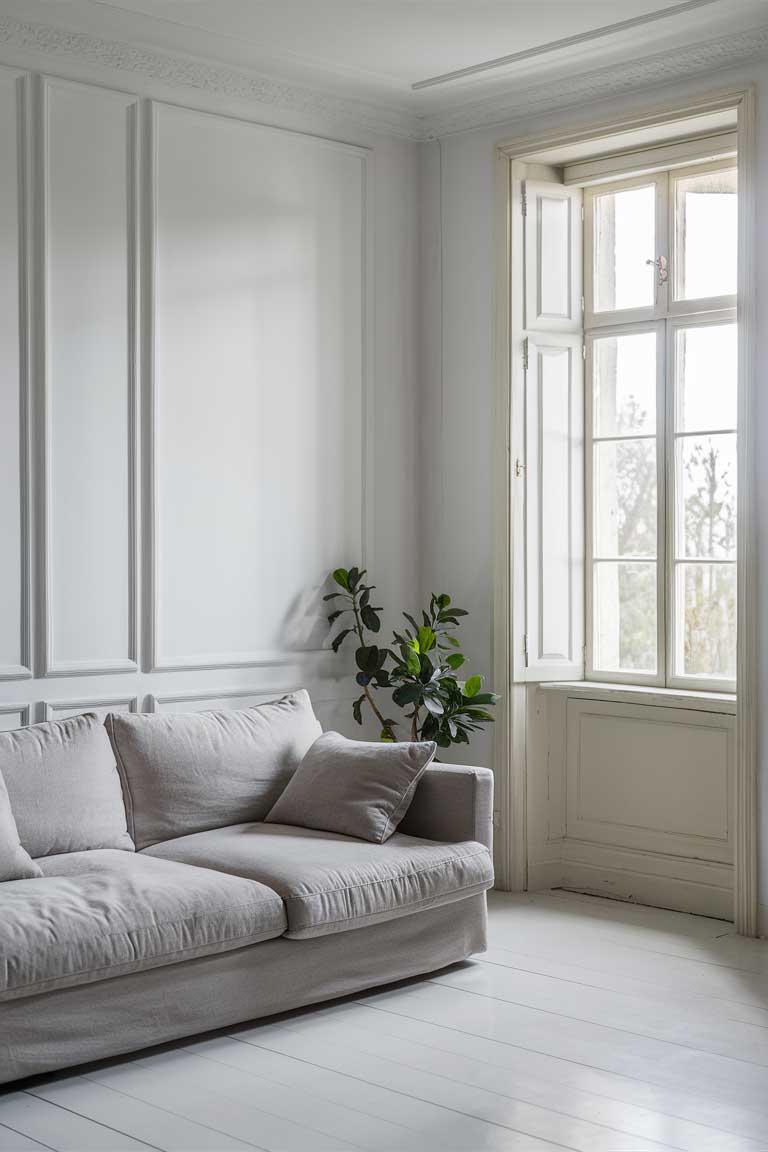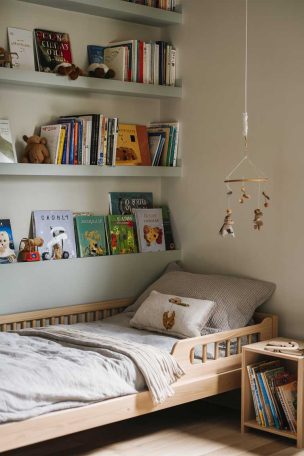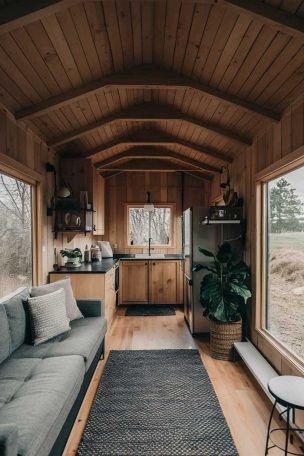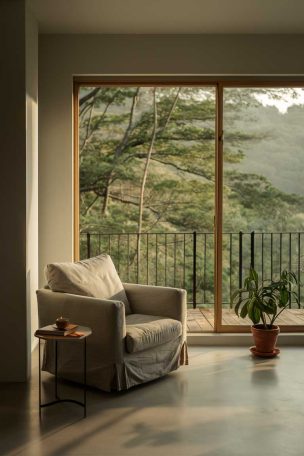Extreme minimalism is a lifestyle that goes beyond traditional minimalism, emphasizing radical simplicity and intentional living. This guide explores the core principles and benefits of adopting an extreme minimalist lifestyle, focusing on reducing physical possessions, streamlining commitments, and fostering meaningful experiences. Individuals can achieve greater freedom, mental clarity, and personal growth by prioritizing what truly matters.
Understanding extreme minimalism involves reevaluating one’s relationship with material possessions and commitments. This lifestyle champions conscious decision-making and living with only the bare essentials, aiming for a more fulfilling and uncluttered life.
Understanding Extreme Minimalism
In a world that’s constantly pushing us to acquire more, there’s a growing movement that’s pushing back: extreme minimalism. It’s not just about decluttering your closet or organizing your desk. No, extreme minimalism takes the concept of ‘less is more’ to a whole new level.
Definition and Core Principles
At its heart, extreme minimalism is a lifestyle that embraces living with only the bare essentials. It’s a radical approach that goes far beyond traditional minimalism, touching every aspect of one’s life. We’re talking about stripping away not just unnecessary physical possessions but also simplifying relationships, activities, and commitments.
The core principle? Intentionality. Extreme minimalists make conscious choices about what to keep in their lives based on two key factors: utility and joy. It’s about asking yourself, “Does this truly serve a purpose or bring me happiness?” If the answer is no, it’s time to let it go.
Key Characteristics
What sets extreme minimalism apart is its all-encompassing nature. It’s not just about having a tidy home (though that’s certainly part of it). Instead, it’s a holistic approach to life that emphasizes:
- Intentional living: Every decision, from what to buy to how to spend time, is made with careful consideration.
- Conscious decision-making: There’s no autopilot here. Extreme minimalists are always aware of their choices and their impact.
- Reevaluation of material possessions: It’s about breaking free from the idea that we need ‘stuff’ to be happy or successful.
- Focus on experiences and growth: Instead of accumulating things, the priority shifts to accumulating memories and skills.
The Philosophy Behind Extreme Minimalism
Now, let’s dig a little deeper into the philosophy that drives this lifestyle. It’s not just about having less stuff – it’s about creating more space for what truly matters.
Intentional Living
Imagine waking up each day with a clear purpose, where every action aligns with your values and goals. That’s the aim of intentional living, a cornerstone of extreme minimalism. It’s about making deliberate choices rather than just going with the flow.
This might mean:
- Carefully considering each purchase: “Do I really need this, or am I just buying it because it’s on sale?”
- Evaluating how you spend your time: “Is this activity contributing to my goals or just filling time?”
- Regularly reassessing your needs vs. wants: What you thought you couldn’t live without last year might not hold the same importance now.
Decluttering Beyond the Physical
Here’s where extreme minimalism really sets itself apart. It’s not just about clearing out your closet (though that’s a great start!). It’s about decluttering every aspect of your life.
This includes:
- Digital decluttering: Unfollowing accounts that don’t bring value, cleaning up your email subscriptions, or even taking a social media break.
- Streamlining commitments: Learning to say no to obligations that don’t align with your priorities.
- Reducing mental and emotional baggage: This could mean letting go of grudges, working through past traumas, or simplifying your to-do list.
Experience-Focused Lifestyle
At its core, extreme minimalism is about shifting focus from things to experiences. It’s the difference between buying a new TV and using that money for a weekend getaway or a cooking class.
This principle extends to personal growth, too. Instead of acquiring more possessions, extreme minimalists invest in:
- Learning new skills
- Deepening relationships
- Exploring their passions
- Cultivating a rich inner life through practices like meditation or journaling
Benefits of Embracing Extreme Minimalism
Now, you might be wondering, “This all sounds nice, but what’s in it for me?” Well, let me tell you, the benefits of extreme minimalism can be pretty life-changing.

Psychological Advantages
First off, let’s talk about your mental health. Extreme minimalism can be like a breath of fresh air for your mind.
- Reduced stress and anxiety: When you’re not constantly worried about managing stuff or keeping up with the Joneses, life gets a lot less stressful.
- Enhanced mental clarity: With less physical and mental clutter, your thoughts become clearer. Decision-making becomes easier.
- Improved focus: When you’re not distracted by unnecessary things, you can concentrate on what really matters.
- Greater sense of freedom: There’s an incredible lightness that comes with knowing you’re not tied down by possessions.
I’ve seen people transform from stressed-out workaholics to calm, content individuals just by simplifying their lives. It’s pretty amazing to witness.
Practical Benefits
But it’s not all about feelings – there are some very tangible benefits too:
- Increased physical space: Imagine your home with only the essentials. Suddenly, you’ve got room to breathe, to move, to live.
- Significant financial savings: When you’re not constantly buying things, your bank account will thank you. Many extreme minimalists find they can work less or pursue passion projects because their expenses are so low.
- More time: Less stuff means less time spent cleaning, organizing, and maintaining possessions. That’s time you can spend on things you actually enjoy.
- Easier maintenance: With fewer possessions, keeping your living space clean and organized becomes a breeze.
Personal Growth Opportunities
Perhaps the most profound benefit is the opportunity for personal growth. Extreme minimalism can be a transformative journey:
- Developing discipline and self-control: Resisting the urge to buy unnecessary things builds willpower that spills over into other areas of life.
- Fostering adaptability: When you learn to live with less, you become more flexible and resilient in the face of change.
- Deepening self-awareness: The process of deciding what’s truly important to you can lead to profound self-discovery.
- Cultivating gratitude: When you have less, you tend to appreciate what you do have more deeply.
Implementing Extreme Minimalism
Alright, so you’re intrigued. Maybe you’re even thinking, “I want to give this a shot.” But where do you start? Don’t worry, I’ve got you covered.
Getting Started
The journey to extreme minimalism doesn’t happen overnight. It’s a process, and it starts with a good, hard look at your current situation.
- Conduct a thorough inventory: Go through everything you own. And I mean everything. That junk drawer you’ve been avoiding? Time to tackle it.
- Identify essentials vs. non-essentials: Be honest with yourself. Do you really need 20 T-shirts? What about that bread maker you used once three years ago?
- Set clear goals: What do you want to achieve with minimalism? More free time? Financial freedom? A clearer mind? Having a ‘why’ will keep you motivated.
- Create a timeline: Rome wasn’t built in a day, and your minimalist life won’t be either. Set realistic deadlines for decluttering different areas of your life.
Strategies for Decluttering
Now comes the fun (or challenging, depending on your perspective) part: actually getting rid of stuff.
- The one-in, one-out rule: For every new item you bring into your life, one has to go. This helps prevent accumulation.
- Digital decluttering: Don’t forget about your virtual life. Unsubscribe from emails, delete unused apps, and clear out your digital files.
- Create a capsule wardrobe: A small collection of versatile clothing items that can be mixed and matched. Trust me, it makes getting dressed in the morning so much easier.
- Embrace minimalist home design: Think clean lines, neutral colors, and multi-functional furniture. It’s amazing how calming a simplified space can be.
Maintaining the Lifestyle
Getting rid of stuff is one thing, but staying minimal? That’s where the real challenge lies.
- Regular reassessment: Set aside time each month to go through your possessions and commitments. Have you accumulated anything unnecessary?
- Develop strategies to resist consumerism: Unsubscribe from marketing emails, avoid window shopping, find non-material ways to treat yourself.
- Create supportive routines: Maybe it’s a weekly declutter session or a monthly review of your goals. Find what works for you and stick to it.
- Continuously align your lifestyle with your values: As you grow and change, so will your interpretation of minimalism. Be flexible and true to yourself.
Challenges and How to Overcome Them
Now, I won’t sugarcoat it – extreme minimalism isn’t always a walk in the park. There are challenges, but don’t worry, they’re not insurmountable.
Emotional Attachment to Possessions
This is a big one. We often attach memories and emotions to our stuff, making it hard to let go.
- For sentimental items, try taking a photo before donating or discarding. You keep the memory without the clutter.
- Consider digitizing things like old letters or children’s artwork. You preserve the sentiment without the physical storage.
- For really tough items, try the “box method”. Pack them away for six months. If you don’t miss them, it’s easier to let them go.
Remember, you’re not erasing memories by getting rid of things. The memories live in you, not in your stuff.
Social Perceptions and Relationships
Let’s face it, extreme minimalism isn’t mainstream (yet). You might face some raised eyebrows or misunderstandings.
- Be prepared to explain your choices. Most people are curious rather than judgmental once they understand.
- Find like-minded communities online or in your area. Having support can make a big difference.
- For family and close friends, lead by example. Let them see the positive changes in your life.
And if you’re in a relationship with a non-minimalist? Communication is key. Find compromises that work for both of you.
Practical Challenges in Daily Life
Living with less does come with some practical hurdles.
- Get creative with multi-purpose items. A simple example: a mason jar can be a drinking glass, food storage, or a vase.
- For items you need occasionally, consider borrowing or renting instead of owning.
- Learn to appreciate quality over quantity. One well-made item often outlasts and outperforms several cheaper alternatives.
Sustainability in a Consumer-Driven Society
We’re bombarded with ads and societal pressure to buy, buy, buy. Staying minimal in this environment takes effort.
- Develop a personal philosophy to guide your decisions. What are your core values? Let them be your compass.
- Practice mindfulness to become aware of your impulses to consume.
- Regularly reflect on the benefits you’ve gained from minimalism. This can reinforce your commitment when temptation strikes.
Extreme Minimalism in Different Life Areas
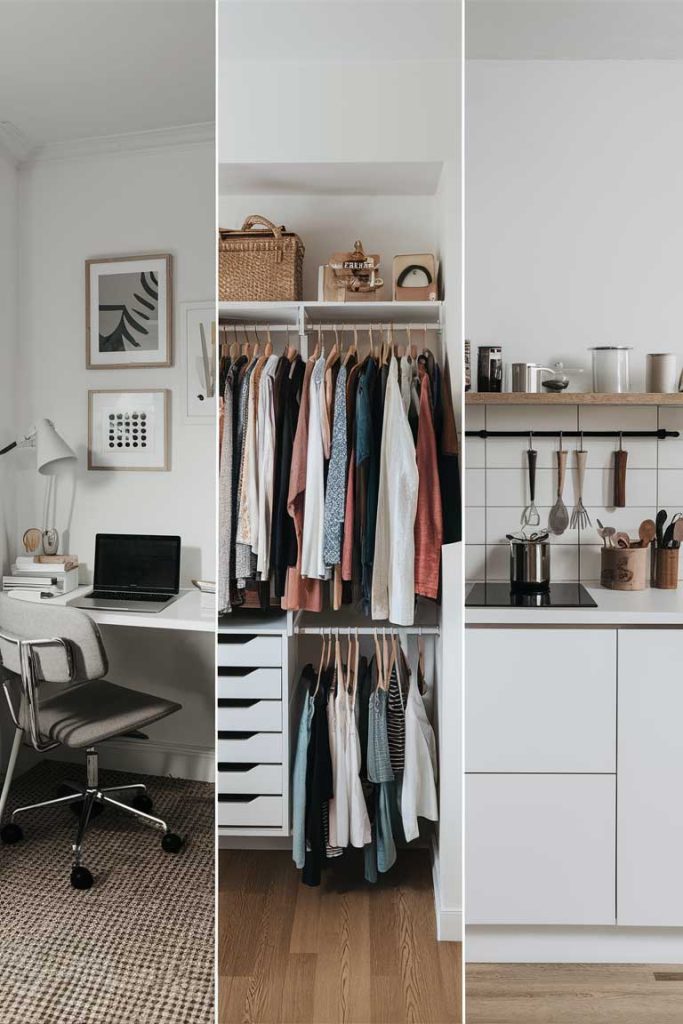
Extreme minimalism isn’t just about your home – it can touch every aspect of your life. Let’s explore how.
Career and Work
In our productivity-obsessed culture, applying minimalist principles to your work life can be revolutionary.
- Simplify your work processes: Cut out unnecessary meetings and streamline your workflow.
- Focus on essential skills: Instead of trying to be a jack-of-all-trades, hone in on what you’re truly great at.
- Consider how your career aligns with your minimalist values. Some even find they can work less when their expenses decrease.
Relationships and Social Life
Quality over quantity applies to relationships too.
- Focus on cultivating deep, meaningful connections rather than a large social circle.
- Simplify social commitments. It’s okay to say no to events that don’t align with your priorities.
- Be open about your lifestyle with friends and family. You might inspire them or at least help them understand your choices.
Health and Wellness
Minimalism can transform your approach to health.
- Simplify your diet: Focus on whole, nutritious foods rather than fad diets or complex meal plans.
- Streamline your exercise routine: You don’t need a gym full of equipment for an effective workout.
- Prioritize mental health: Meditation, journaling, or simply enjoying quiet time can be powerful tools for well-being.
Finances and Consumption
This is where many people see the most tangible benefits of extreme minimalism.
- Create a minimalist budget focused on necessities and experiences that truly add value to your life.
- Shift your mindset from acquiring things to acquiring experiences and skills.
- Consider long-term financial planning through a minimalist lens. Could you retire earlier? Switch to a lower-stress job?
The Future of Extreme Minimalism
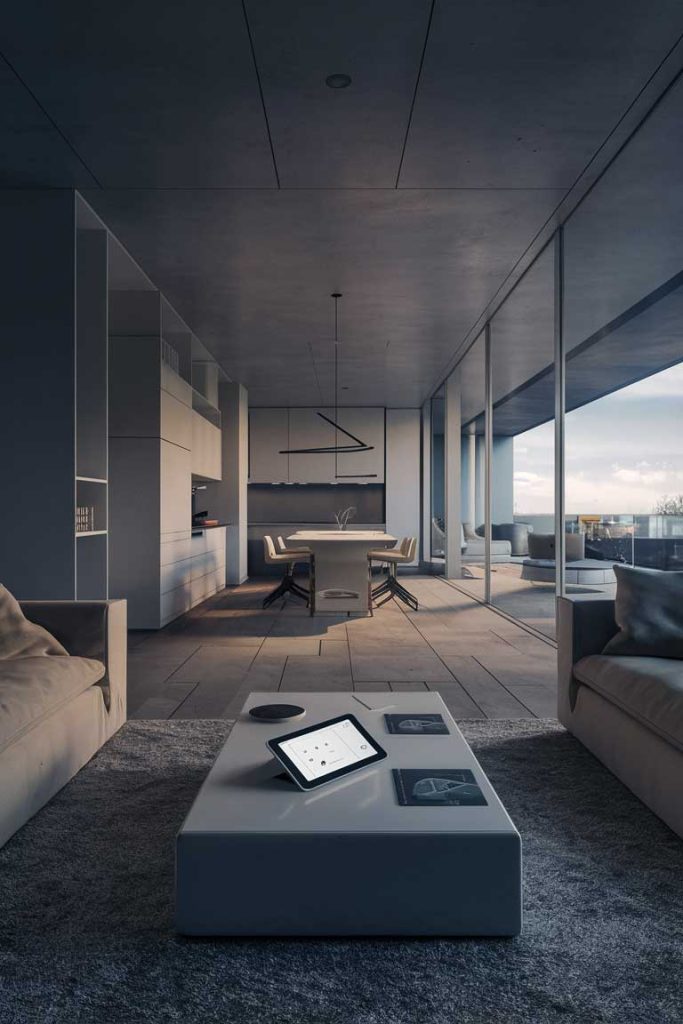
As our world grapples with issues like climate change and mental health crises, extreme minimalism seems poised for growth.
Evolving Trends
We’re already seeing minimalism merge with other movements:
- Sustainability: Minimalism naturally aligns with eco-friendly lifestyles.
- Digital minimalism: As our lives become increasingly online, we expect to see more focus on decluttering our digital spaces.
- Mindfulness: The intentionality of minimalism pairs well with mindfulness practices.
Long-term Impact
If extreme minimalism continues to grow, we could see some significant changes:
- Personal transformation: More people experience the freedom and clarity that comes with living with less.
- Shifts in consumption patterns: This could have far-reaching effects on industries and the economy.
- Environmental benefits: Reduced consumption could play a role in addressing climate change.
Conclusion: Is Extreme Minimalism Right for You?
After diving deep into extreme minimalism, you might wonder if it’s the right path for you. Here’s the thing: there’s no one-size-fits-all approach.
Start by assessing your values and goals. Does the idea of living with less appeal to you? Are you feeling overwhelmed by clutter – physical, digital, or mental?
Consider the potential benefits we’ve discussed:
- Reduced stress and anxiety
- More financial freedom
- Increased focus on what truly matters to you
- A lighter environmental footprint
But also be honest about the challenges:
- The emotional process of letting go
- Potential misunderstandings from others
- The ongoing effort required to maintain the lifestyle
If you’re intrigued but not ready to go “extreme,” that’s okay! You can start by incorporating minimalist principles gradually:
- Try a decluttering challenge in one area of your home.
- Experiment with a capsule wardrobe for a season.
- Take a social media break to experience digital minimalism.
Remember, the goal of minimalism isn’t to live with as little as possible. It’s to make room for what’s truly important to you. Whether that means owning 100 items or 1000, what matters is that your lifestyle aligns with your values and brings you joy.
Extreme minimalism isn’t just about stuff – it’s a mindset, a way of approaching life with intention and purpose. And in our often chaotic, overwhelming world, that might be just what we need.
So, are you ready to explore what extreme minimalism could mean for you? The journey of a thousand miles begins with a single step – or in this case, perhaps with letting go of a single possession. Your path to a simpler, more intentional life awaits.

